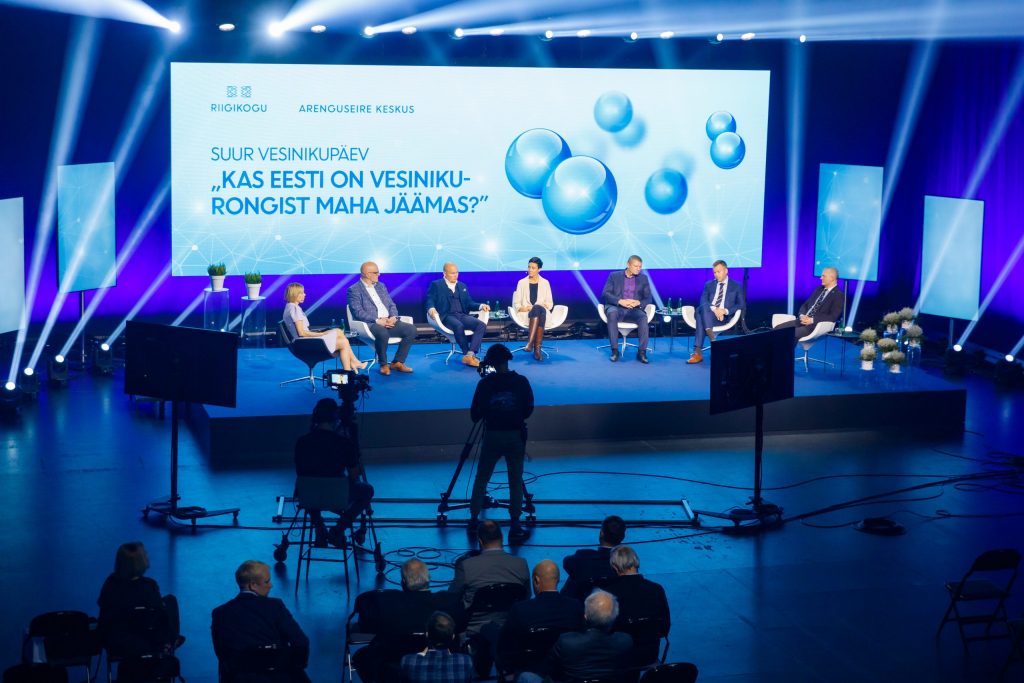Report: Hydrogen technologies can bring great economic benefit to Estonia, but they require extensive investments
Hydrogen technology which is waiting for a global breakthrough offers numerous opportunities to Estonia. Estonia has a strong potential in hydrogen production as well as in hydrogen technology research and development and the application of the technology, the Foresight Centre points out in its brief report “The State of Play and Prospects for Hydrogen Technology”.

Uku Varblane, Head of Research of the Foresight Centre, pointed out that hydrogen technology had the potential to be in the centre of the European transport and energy sector in the coming decades, but renewable energy sources had to be used in production to achieve a positive environmental impact. “Hydrogen technology is waiting for a global breakthrough in hydrogen production because at the moment over 95% of hydrogen is still produced using fossil fuels, mainly from methane. The hydrogen thus produced facilitates global warming to the same extent as direct burning of fossil fuels,” Varblane said.
Green hydrogen produced by water electrolysis with the help of solar and wind energy is on the other hand one of the most environmentally and climate friendly energy carriers. The implementation of green hydrogen may extensively reduce the amount of greenhouse gases in industry, transport, and energy generation. “A breakthrough in the production of clean or green hydrogen will come once opportunities to scale up are found. Electrolysers with greater capacity and productivity and better resilience would be needed,” Varblane explained. He added that the global market volume of green hydrogen production had been estimated at 3-4 billion euro in 2021 but it was projected to increase by dozens of times by 2030.
According to Varblane, whether Estonia’s potential in the production of green hydrogen and its derivatives will be manifested will depend on the amount of wind and solar energy Estonia will produce, and on whether Estonia will join the pan-European hydrogen network and the Nordic Hydrogen Route hydrogen infrastructure, connecting the Nordic countries, which is part of that network. The latter is planned to cover the hydrogen need of Finland and Sweden which is estimated to amount to 65 TWh per year by 2050.
The Foresight Centre points out in the report that, in order to gain economic benefit from the spread of hydrogen technology, it will be necessary to establish a national hydrogen infrastructure, for example, to create opportunities for hydrogen transport in deep-water harbours, to establish a hydrogen pipeline and to integrate local solar and wind farms with hydrogen production and transport. In addition, the export of hydrogen also presumes that land transport infrastructure will be updated, and Estonian ports will be made hubs for hydrogen fuel.
Although the development of hydrogen technology is global, Estonia has opportunities to influence various technological tipping points. For example, a promising line of research for Estonia is connected with more efficient and more affordable high-temperature electrolysis as well as fuel cells and the materials related to them.
The brief report “The State of Play and Prospects for Hydrogen Technology” is part of the Foresight Centre’s line of research “Green Transition Scenarios in Estonia.” The report is based on the study “Alternative development trajectories to deep technologies and their significance for Estonia” which CIVITTA Estonia carried out at the request of the Foresight Centre.
Latest news
-
27.06 2025Current low birth rate will lead to up to 1.3 billion euros less tax revenue in the future
In its new short report “The impact of population ageing and low birth rate on long-term state revenue and expenditure”, the Foresight Centre notes that the lower than projected birth rate will reduce government spending on family policy and education, but in the long term, it will mean up to 1.3 billion euros less in tax revenue.

 An independent think tank at the Riigikogu
An independent think tank at the Riigikogu